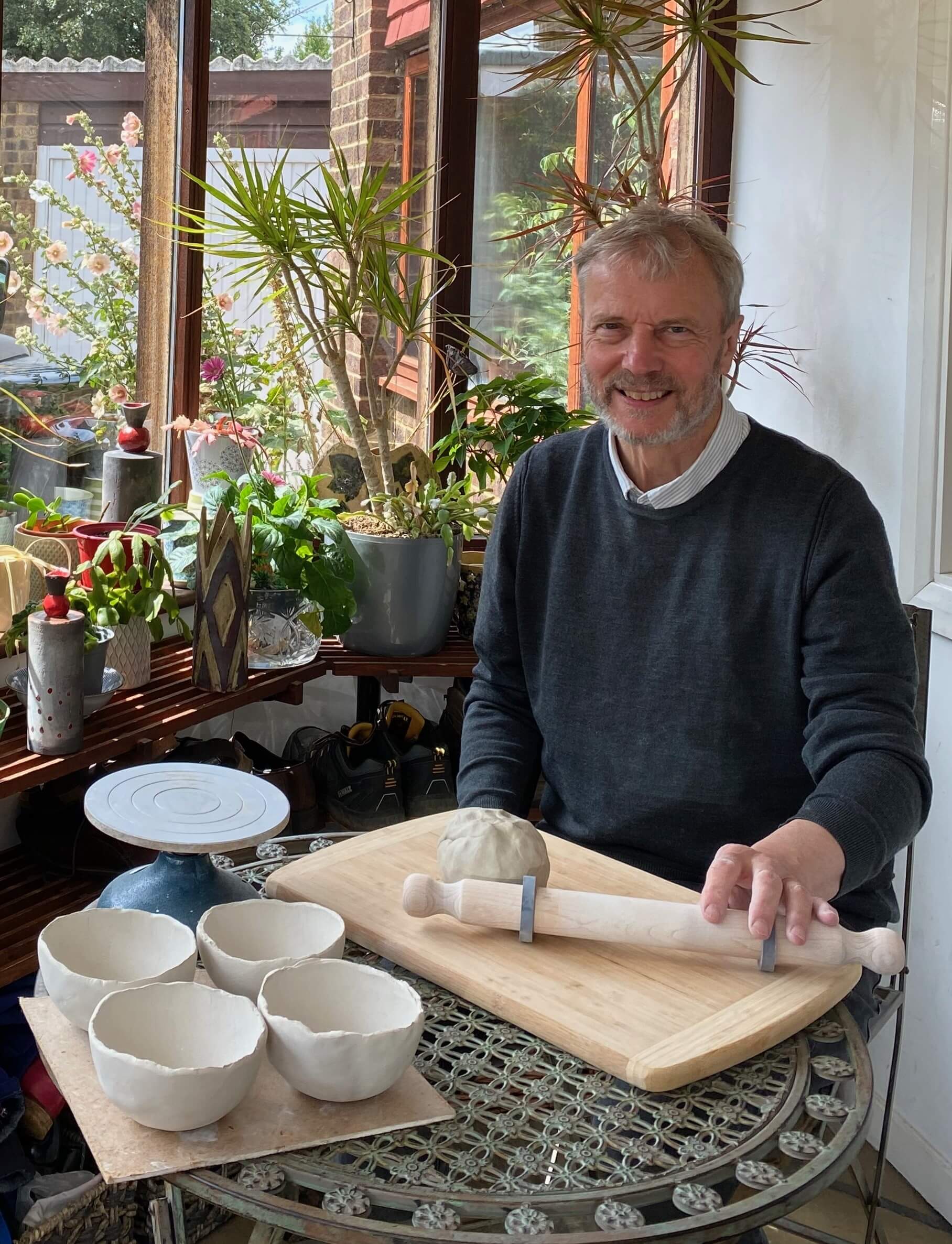
Peter Gledhill has been making pots since the age of eleven. He was lucky to be able to climb over his family’s back garden fence in to the grounds of North Warwickshire College of Technology and Art, where he attended Saturday morning classes for school kids in their large Industrial Ceramics Department. His teachers responded positively to his precocious enthusiasm and he got to play with ALL of the equipment.
Sadly his potting routine was interrupted by relocation to medical school and subsequent busy career as a doctor, but after a 40 year interlude, he’s making pots again. He enjoys making pottery that is practical and food safe in matching sets, but most of his pots in the Caversham Picture Framer are Raku ware, made by a complex and unpredictable process which ensures that each piece is unique.
About the Raku technique:
Raku pottery is made by heating pots to nearly 1000 degC before carefully transferring the orange hot pots to a closed container of wood shavings, sawdust or shredded paper. This subjects the pot to a huge thermal shock that cracks the glaze, and surrounds it in smoke that deposits black carbon on any unglazed areas of pot including in the glaze cracks, whilst hot carbon monoxide steals oxygen from the metal oxides in the glaze leaving them with a silvery or coppery sheen. Some elements of the process are very hard to control, which means that no two Raku pots are ever the same.
Raku ware is not food safe and is intended to be decorative. Vases won’t come to any harm if you put water in them, but the crackle in the glaze allows water to seep through so avoid polished surfaces. Raku lanterns, having survived the Raku firing process, are extremely heat resistant so both traditional and LED candles are fine.
View portfolio